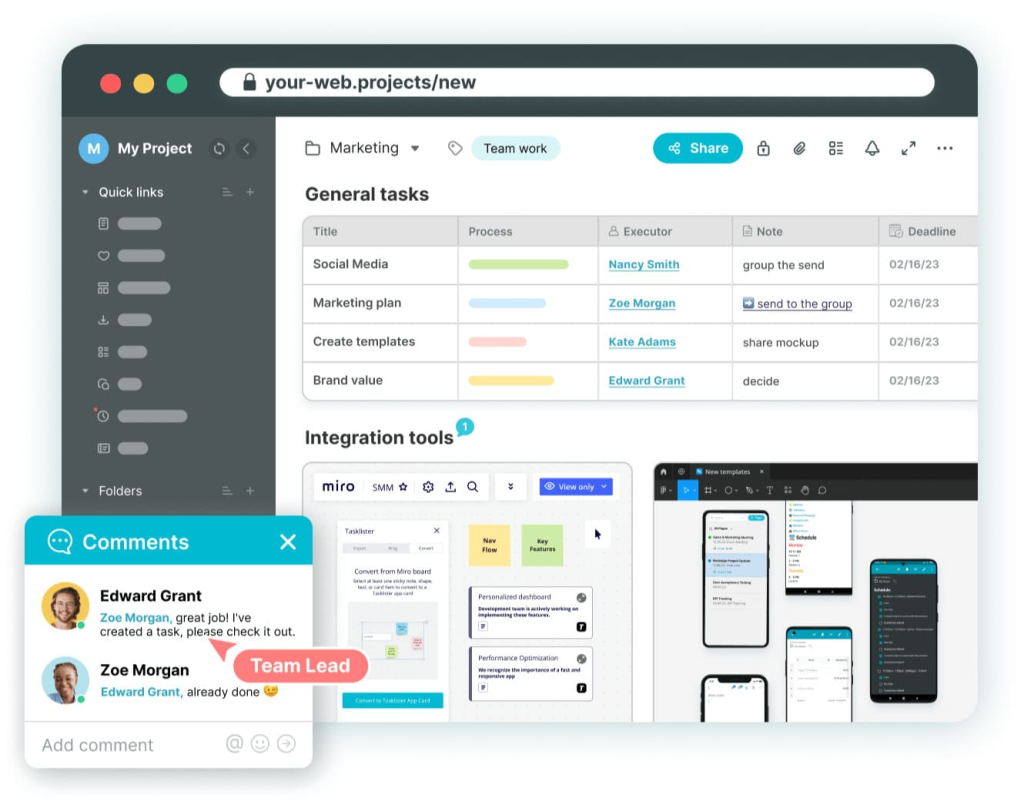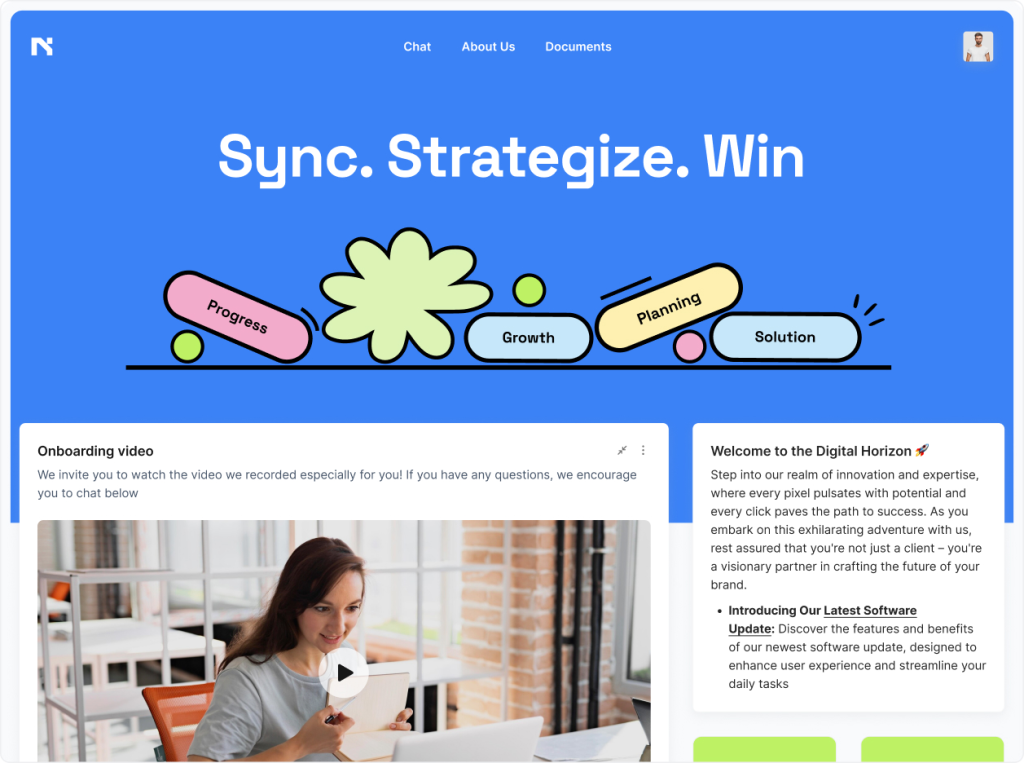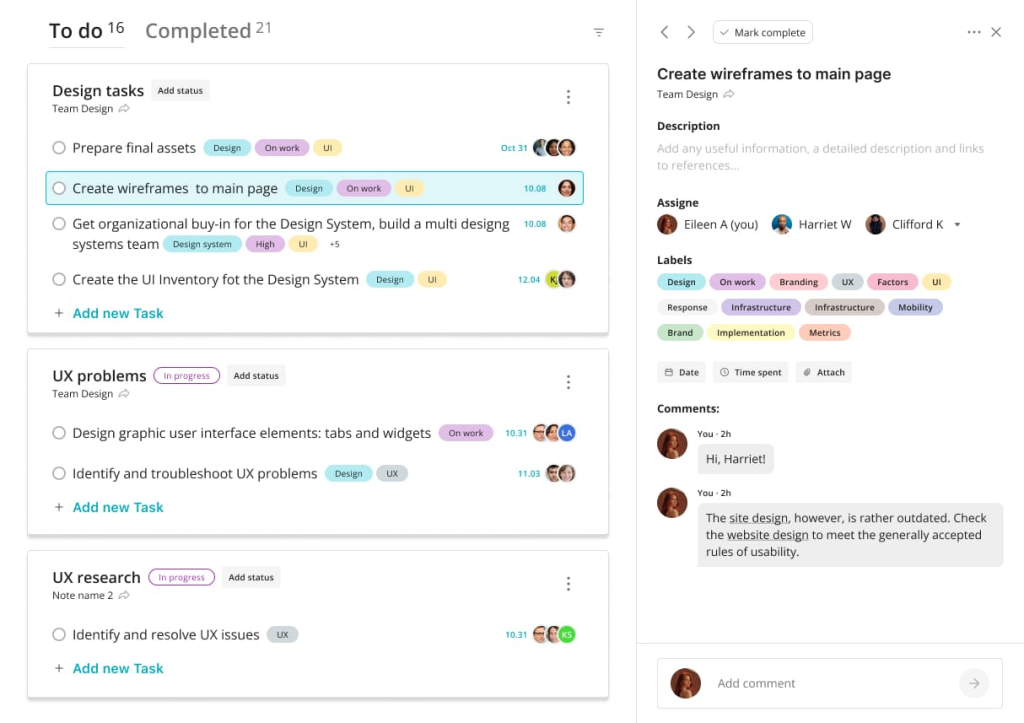
In today’s ever-evolving business landscape, numerous companies are embracing remote work. This shift, while offering flexibility, can sometimes lead to employees feeling disconnected from their peers and the daily rhythms of their work. Managing a team under these circumstances poses its own set of challenges. Fortunately, there are a plethora of online tools designed to enhance coordination and streamline the allocation of tasks. One such tool that stands out is organizational chart software, which can be instrumental in keeping teams organized and connected, regardless of their physical location.
Understanding Org Chart Software
Organizational chart software is an essential tool for businesses, providing a visual representation of the company’s structure. It serves as a comprehensive personnel directory, delineating the connections between different departments, teams, and roles. The hierarchy within the organization is clearly depicted through the chart, clarifying the chain of command, levels of authority, and reporting relationships. This clarity is crucial for both internal communication and strategic planning, ensuring that everyone understands their place and responsibilities within the larger corporate framework.

Organizational charts, commonly known as org charts, outline the hierarchy of the organization and show the relationships between different departments and personnel. The creation of an org chart can be facilitated by various software tools, which are chosen based on the specific needs and setup of the company. Here are a few examples of how org charts can be designed with the assistance of these tools:
- Simple Hierarchical Structure: Ideal for small businesses or startups, this org chart displays a clear chain of command from the top-level management down to the entry-level employees.
- Matrix Structure: Used by companies with project-based teams, this org chart reflects multiple supervisors or managers that employees might report to, illustrating the complexity of working relationships.
- Flat Structure: Common in modern startups and tech companies, this org chart shows few or no levels of middle management between staff and executives, promoting a culture of openness and collaboration.
- Divisional Structure: Large corporations with multiple product lines or geographic locations often use this type of org chart to represent each division’s internal structure and leadership.
- Functional Structure: This org chart is organized by departments such as marketing, finance, human resources, etc., and is suitable for companies with specialized teams.
By selecting the appropriate software, companies can create an org chart that best reflects their organizational structure and facilitates better communication and planning.
Who Can Use Org Charts?
While the Human Resources (HR) department is commonly tasked with the creation of org charts, their relevance is far-reaching, aiding in clarity and communication across various departments. Let s who have benefits when using org charts.
Professionals in Human Resources
Recruiters and hiring managers can leverage organizational charts to proactively address the company’s staffing needs in alignment with its mission and vision. Org charts are valuable tools for anticipating future leadership roles, identifying employees primed for promotion, and recognizing areas where additional training is necessary. They also help pinpoint existing skill and talent gaps, enabling more strategic workforce planning and development. This foresight in staff preparation ensures the company remains agile and well-equipped to meet its objectives.
New employees
During the onboarding process, org charts ensure that new employees receive a comprehensive introduction to your company. This includes a detailed explanation of our organizational structure, an introduction to their colleagues and team members, a meeting with their direct manager, and a clear outline of the reporting hierarchy.

To help new employers navigate their new environment and foster connections, provide them with complete access to a directory containing the contact information of all team members. This resource is invaluable as they become acquainted with the office and the people they will be collaborating with.
Staff members
It’s the first place your staff members will go when they need to find a fast contact or piece of data. Self-service features in organizational charts enable employees to effortlessly update their profiles. This not only streamlines the process for the HR department but also ensures that employee information is always current and accurate.
Benefits of Using Org Chart Software
A well-drawn org chart software may help businesses in many ways.
1. Clarifying the Organizational Hierarchy
Organizational charts serve as visual representations of a company’s structure, illustrating the various levels of management and teams. These charts detail the hierarchy, showcasing the Head of the organization, their direct reports, and the teams under each manager. Such a structure is essential for defining the flow of tasks, ensuring effective coordination, and overseeing team activities in alignment with the company’s goals. By consulting the org chart, employees can easily identify their peers, understand their position within the company, and know who to approach for guidance or to escalate issues.
2. Outlining Roles and Responsibilities
An org chart is a valuable tool for employees to understand their specific roles and the scope of their responsibilities within the organization. It is particularly useful for orienting new staff, as it helps them identify their supervisors and the department they will be joining. For existing employees, the chart reinforces their understanding of their place within the company’s hierarchy and the expectations associated with their position. This clarity is crucial for employees to perform their duties effectively and contribute to the organization’s success.

3. Streamlining Team Structures
Effective team restructuring is essential for businesses of all sizes. As an organization grows, utilizing an organizational chart simplifies the process of identifying potential mergers between departments to create more cohesive units. It also helps pinpoint divisions with surplus resources that could be redistributed to enhance other groups, especially when aligning with the skillsets needed for specific projects.
4. Strategic Resource Allocation
Determining where to bolster team support requires careful consideration, not just a response to a team leader’s request. A well-defined organizational chart provides a transparent view of resource distribution, highlighting areas with critical needs. It can reveal if a team member is overstretched by multiple managers or if a supervisor is overrepresented across the chart. Conversely, in efforts to cut costs, the chart can guide strategic downsizing by identifying non-essential roles for potential layoffs.
5. Visualizing Remote Workforces
With companies increasingly operating on a global scale, understanding the structure of geographically dispersed teams can be challenging. Advanced organizational charts can integrate additional data, offering insights into team members’ tenure, roles, and current projects. This wealth of information empowers decision-makers to make informed choices. An intuitive org chart interface, customizable with company branding, provides leaders with a clear view of their teams’ composition, strengths, weaknesses, and the distribution of resources to various projects.
Building Org Charts with Software
Human resources professionals may save a great deal of time and energy. The problems that HR departments face today may be solved entirely with the help of org chart software. The org chart software automatically reflects any changes made to employee profiles. Here is your roadmap on implementing org chart software:
- Explore Org Chart Software: Investigate the various org chart tools available to find the one that best fits your company’s needs and budget.
- Visualize Your Company Structure: Utilize org chart software to create a clear and detailed visualization of your company’s hierarchy and departments.
- Enhance Team Collaboration: Encourage your team to use the org chart to identify key personnel across departments, fostering better cross-functional collaboration.
- Boost Morale and Productivity: Regularly update your org chart to reflect changes and growth, keeping communication transparent and boosting team morale.
What Is the Best Organizational Chart Software?
Online tools for creating organizational charts often have paid versions with advanced features, which can be costly, especially for small startups. Pricing models vary, with some tools offering monthly subscriptions and others requiring annual billing. Fortunately, many org chart software options provide free trials, allowing users to test them before making a purchase decision. Here’s a curated list of top org chart software platforms.
1. FuseBase (formerly Nimbus)

FuseBase streamlines your team’s workflow by offering a single platform for document creating, file-sharing, and project management. Tailor the workspace to your company’s culture, create a variety of documents, and integrate third-party data with ease. Organize your content in customizable Workspaces, each with its own collaboration tools, while admins manage everything centrally for scalability and control.
Organizational Chart Features
With FuseBase, you can visually map out your company’s hierarchy using organizational charts. These charts are easily customizable, allowing you to add employee photos, use color coding to differentiate departments, and arrange information in a clear, hierarchical format. This visual tool not only enhances understanding of company structure but also serves as a practical reference for team members.
2. The Org

The Org is an online platform designed to streamline the creation and publication of organizational charts. It offers a user-friendly interface where you can freely add and update your team members’ details, ensuring your company’s hierarchy is always current. This service is available at no cost, providing a valuable resource for maintaining an accurate representation of your organizational structure
One of the standout features of The Org is its open-access repository of org charts from a multitude of businesses, including industry giants like Google, Tesla, and Amazon. This transparency allows users to gain insights into the corporate structures of some of the world’s most successful companies, offering inspiration and benchmarks for their own organizational design.
3. Lucidchart

Lucidchart is a cloud-based visual workspace that supports a broad range of diagramming activities, from brainstorming to creating detailed visual guides like flowcharts and wireframes. It’s an ideal tool for collaborative planning and visual documentation
The platform’s organizational chart features are particularly user-friendly, offering a drag-and-drop interface and a selection of templates. This simplifies the process of creating customized org charts, making it accessible for users of all skill levels.
4. ChartHop

ChartHop emerged in the org chart software scene in 2020, offering a dynamic solution for businesses grappling with frequent organizational changes. The platform was designed to streamline the sharing of employee roles and updates, including new hires and departures, thus moving away from traditional paper or static digital methods
Org Chart Features:
ChartHop provides a suite of features that enhance organizational management. Users can effortlessly save their work and revisit past versions of their org charts, ensuring historical data is never lost. The software also boasts capabilities for modeling future organizational structures by simulating growth scenarios, personnel shifts, and the integration of new team members, allowing for strategic planning and visualization.
5. Creately

Creately is a collaborative, cloud-based diagramming tool that allows users to create and share organizational charts and other diagrams both online and offline. It streamlines teamwork with real-time editing and centralized feedback management
The free version of Creately is an excellent choice for making org charts, though it limits users to three shared documents and a small user group. Despite these restrictions, it remains a popular tool for quick and professional chart creation.
6. Microsoft Visio

Microsoft Visio is a part of the Microsoft Office suite and is used for making diagrams and charts. It has many templates for different kinds of diagrams, and you can use it on Apple devices through the internet. It’s similar to other diagram tools like Lucidchart because it’s easy to use
Visio is especially good for making organizational charts, or org charts. It has easy-to-use templates that help you put together an org chart quickly. You can just drag and drop items to build your chart, and when you’re done, you can save it as a PDF to share with others.
7. People.ai (formerly ClosePlan)

People.ai’s ClosePlan is a powerful add-on designed for Salesforce that enhances the CRM experience by enabling users to create detailed org charts directly from their existing Salesforce contacts. This tool is particularly beneficial for sales teams, as it integrates seamlessly with Salesforce, allowing for a more streamlined and efficient approach to managing sales processes and understanding client relationships.
The org chart capabilities within ClosePlan are delivered through its Relationship Maps feature, which offers an intuitive org chart maker. Sales professionals can leverage this feature to visualize the hierarchy and relationships of contacts within an organization. The user-friendly drag-and-drop interface simplifies the creation and editing of org charts, while the options to publish, share, and export these charts ensure that team members can collaborate effectively and have access to the organizational insights they need to drive sales and close deals.
8. Pingboard

Pingboard offers a dynamic organizational tool that enhances HR functions for businesses of all sizes. It provides a detailed employee directory with customizable fields and ensures that managers have access to up-to-date shared employee records
The platform stands out with its extensive range of over 32,000 customizable org chart templates, which automatically update when employee details change. This feature allows for effortless integration with other HR and IT systems, keeping the organizational structure accurate and current with minimal manual intervention.
9. OrgChartPlus

OrgChartPlus is an add-on for Salesforce designed to enhance the creation and management of organizational charts and diagrams within the Salesforce ecosystem. Its seamless integration ensures that any updates made within Salesforce are automatically reflected in OrgChartPlus, and vice versa, maintaining consistency and accuracy across both platforms
The tool boasts a user-friendly drag-and-drop editor that simplifies the process of creating or updating org charts. Additionally, OrgChartPlus provides the convenience of exporting these diagrams directly to PowerPoint, Word, and other popular programs. For any issues that may arise, users can rely on the suggested customer support offered by OrgChartPlus to assist them in navigating and utilizing the tool effectively.
10. Gliffy

Gliffy is an affordable and accessible online tool designed for crafting various types of diagrams with ease. Its intuitive drag-and-drop interface simplifies the process of diagram creation, making it an ideal choice for both beginners and professionals. Being browser-based, Gliffy allows users to work on their projects from anywhere, without the need for any software installation
When it comes to creating organizational charts, Gliffy stands out with its specialized features. Users can take advantage of a wide array of customization options, including a diverse color palette, a selection of fonts, and different design styles. This flexibility ensures that the org charts not only fulfill their functional purpose but also align with the aesthetic preferences or branding requirements of any organization.
11. Organimi

Organimi is a streamlined org chart software that allows for easy creation and management of a company’s organizational structure. It emphasizes simplicity and user-friendliness, catering to businesses that value efficiency
The platform supports automatic org chart generation from CSV imports, offering customizable options to tailor the charts to specific needs. Additionally, Organimi integrates smoothly with HR management systems, enhancing its utility without overcomplicating the user experience.
Conclusion
Organizational chart software is a tool for visualizing a company’s hierarchy and supports strategic planning by providing clear insights into the company’s structure and key relationships. This software simplifies project management by automating updates, ensuring employees have the latest organizational information for optimal engagement and decision-making.
To select the best org chart software:
- Identify Needs: Gauge your organization’s size and required feature complexity.
- Define Objectives: What improvements are you seeking? Better communication, HR management, or planning?
- Research and Compare: Look for software that matches your objectives and budget.
- Test: Use trials or demos to evaluate effectiveness and gather user feedback before making a final decision.

